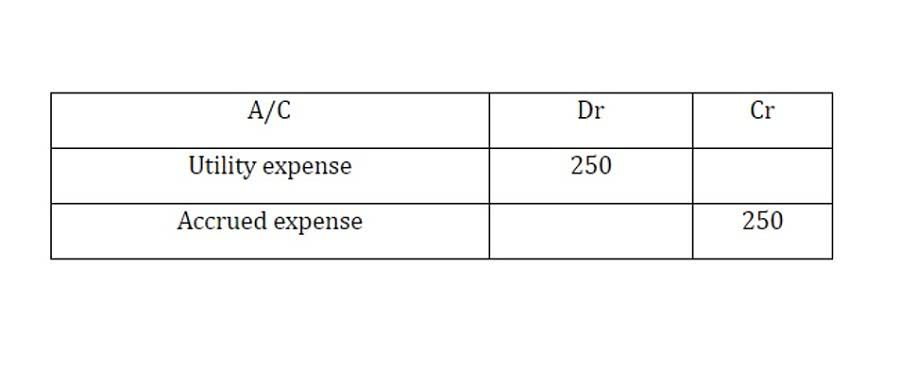Quick Ratio Calculator
Otherwise referred to as the “acid test” ratio, the quick ratio’s distinction from the current ratio is that a more stringent criterion is applied for the current assets included in the calculation. The current ratio does not inform companies of items that may be difficult to liquidate. For example, consider prepaid assets that a company has already paid for.
- A company that needs advance payments or allows only 30 days to the customers for payment will be in a better liquidity position than a company that gives 90 days.
- As the quick ratio only wants to reflect the cash that could be on hand, the formula should not include any receivables a company does not expect to receive.
- Regardless of which method is used to calculate quick assets, the calculation for current liabilities is the same as all current liabilities are included in the formula.
- But also has $1,500 in quick assets, so its quick ratio is 1.5, or $1,500 / $1,000.
- The quick ratio is a more appropriate metric to use when working or analyzing a shorter time frame.
We can now understand the various ways through which we can improve the Quick ratio. Apart from the retail sector, when we analyze the companies in the Oil & Gas sector, the ratio profile is no different. The company was able to increase its Quick ratio for the past few years on a continuous basis. Although this ratio appears to be really low on a standalone basis, but it is important to compare the ratio to other similar companies.
What Is Included in the Quick Ratio?
In the case of Walmart, as we can see in the chart above the quick ratio is moderately in the range of 0.1 to 0.3 times. The quick ratio is often called the acid test ratio in reference to the historical use of acid to test metals for gold by the early miners. If metal failed the acid test by corroding from the acid, it was a base metal and of no value.
That’s why the quick ratio excludes inventory because they take time to liquidate. Current liabilities are a company’s short-term debts due within one year or one operating cycle. Accounts payable is one of the most common current liabilities in a company’s balance sheet. It can also include short-term debt, dividends owed, notes payable, and income taxes outstanding.
The quick ratio is called such because it only measures liquid assets, or assets that can be quickly converted into cash. You will need to be using double-entry accounting in order to run a quick ratio. On the other hand, removing inventory might not reflect an accurate picture of liquidity for some industries. For example, supermarkets move inventory very quickly, and their stock would likely represent a large portion of their current assets. To strip out inventory for supermarkets would make their current liabilities look inflated relative to their current assets under the quick ratio. The quick ratio evaluates a company’s capacity to meet its short-term obligations should they become due.
- The quick ratio (acid-test ratio) is a simple indicator used to measure the ability of a company to meet its short-term obligations with its most liquid assets.
- The current ratio also includes less liquid assets such as inventories and other current assets such as prepaid expenses.
- Similar to above, when we add items like Accounts payable, Accrued expenses, Short term debt, Lease obligations & other quick liabilities, we get Current liabilities of $77,477.
- The quick ratio is equivalent to the acid test ratio in GAAP accounting, which approaches the same number by netting certain assets from current assets.
- While the quick ratio is a quick & easy method of determining the company’s liquidity position, diligence must be done in interpreting the numbers.
These assets are known as “quick” assets since they can quickly be converted into cash. The quick ratio communicates how well a company will be able to pay its short-term debts using only the most liquid of assets. The ratio is important because it signals to internal management and external investors whether the company will run out of cash. The quick ratio also holds more value than other liquidity ratios such as the current ratio because it has the most conservative approach on reflecting how a company can raise cash. The quick ratio looks at only the most liquid assets that a company has available to service short-term debts and obligations.
Marketable Securities
It indicates that the company is fully equipped with exactly enough assets to be instantly liquidated to pay off its current liabilities. For instance, a quick ratio of 1.5 indicates that a company has $1.50 of liquid assets available to cover each $1 of its current liabilities. The acid-test ratio (ATR), also commonly known as the quick ratio, measures the liquidity of a company by calculating how well current assets can cover current liabilities. The comparative study of a quick ratio for FY 16 & 17 suggests that the quick ratio of Reliance Industries declined from 0.47 to 0.44. This indicates that the short-term liquidity position of Reliance Industries is bad, and hence it cannot pay off its current liabilities with the quick assets.
We’re firm believers in the Golden Rule, which is why editorial opinions are ours alone and have not been previously reviewed, approved, or endorsed by included advertisers. Editorial content from The Ascent is separate from The Motley Fool editorial content and is created by a different analyst team. Charlene Rhinehart is a CPA , CFE, chair of an Illinois CPA Society committee, and has a degree in accounting and finance from DePaul University. With NetSuite, you go live in a predictable timeframe — smart, stepped implementations begin with sales and span the entire customer lifecycle, so there’s continuity from sales to services to support.
You can obtain the exact values of this equation’s particular factors on the basis of the company’s annual report (balance sheet). The quick ratio (acid-test ratio) is a simple indicator used to measure the ability of a company to meet its short-term obligations with its most liquid assets. In other words, the quick ratio allows you to determine whether or not a company has enough resources to fulfill its obligations that are due within a year. The current ratio is a very similar liquidity indicator, which we described in the current ratio calculator. The quick ratio is a formula and financial metric determining how well a company can pay off its current debts.
The acid-test ratio is a more conservative measure of liquidity because it doesn’t include all of the items used in the current ratio, also known as the working capital ratio. The current ratio, for instance, measures a company’s ability to pay short-term liabilities (debt and payables) with its short-term assets (cash, inventory, receivables). The acid-test ratio is more conservative than the current ratio because it doesn’t include inventory, which may take longer to liquidate. The quick ratio is a more appropriate metric to use when working or analyzing a shorter time frame.
Quick Ratio vs. Current Ratio: What is the Difference?
As part of liquidity ratios, apart from the Current Ratio, another important ratio is the Quick ratio or Acid test ratio. Did you know that data in the annual report also allows you to calculate profitability ratios, such as the return on equity and assets? What if we tell you there are tools that indicate the profits you could make versus the risk you are assuming? A high ratio may indicate that the company is sitting on a large surplus of cash that could be better utilized. For example, the company could invest that money or use it to explore new markets. The higher the quick ratio, the more financially stable a company tends to be, as you can use the quick ratio for better business decision-making.
Calculating the Acid-Test Ratio
By excluding inventory, and other less liquid assets, the quick ratio focuses on the company’s more liquid assets. The quick ratio is the barometer of a company’s capability and inability to pay its current obligations. Investors, suppliers, and lenders are more interested to know if a business has more than enough cash to pay its short-term liabilities rather than when it does not. Having a well-defined liquidity ratio is a signal of competence and sound business performance that can lead to sustainable growth. Ideally, companies should have a ratio of 1.0 or greater, meaning the firm has enough liquid assets to cover all short-term debt obligations or bills.
A ratio higher than 1.0 means that the company has more money than it needs. For example, a ratio of 2.0 means that the company has $2 on hand for every $1 it owes. This is generally good, as it means that the company can easily make payments on any of its debts.
Real-World Example of Current Ratio and Quick Ratio
You can find the value of current liabilities on the company’s balance sheet. A company should strive to reconcile their cash balance to monthly bank statements received from their financial institutions. This cash component may include cash from foreign countries translated to a single denomination.
Some may consider the quick ratio better than the current ratio because it is more conservative. The quick ratio demonstrates the immediate amount of money a company has to pay its current bills. The current ratio may overstate a company’s ability to cover short-term liabilities as a company may find difficulty in quickly liquidating all inventory, for example. A company’s current ratio will often be higher than its quick ratio, as companies often use capital to invest in inventory or prepaid assets.
For example, a liability may allow for variable times or forms of payment, or the company may have access to credit and refinancing options. Like your assets, you’ll only want to include your current liabilities when calculating the quick what is shrinkage in inventory ratio. You would not include prepaid insurance, employee advances, and inventory assets since none of those items can be quickly converted to cash. Illiquid assets are excluded from the calculation of the quick ratio, as mentioned earlier.







